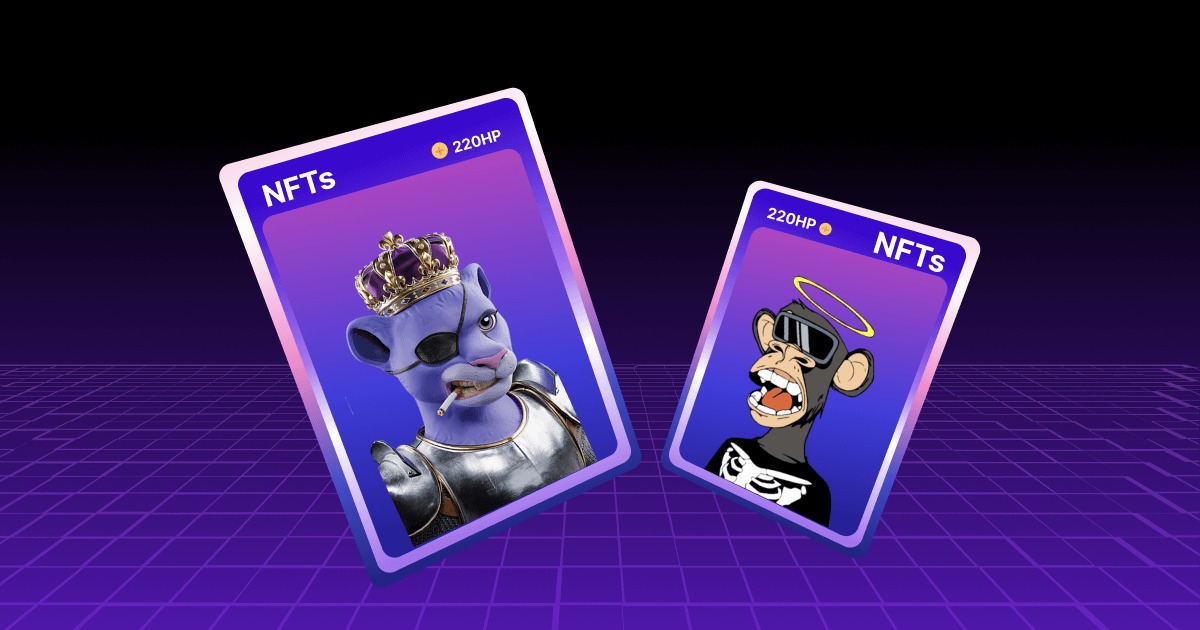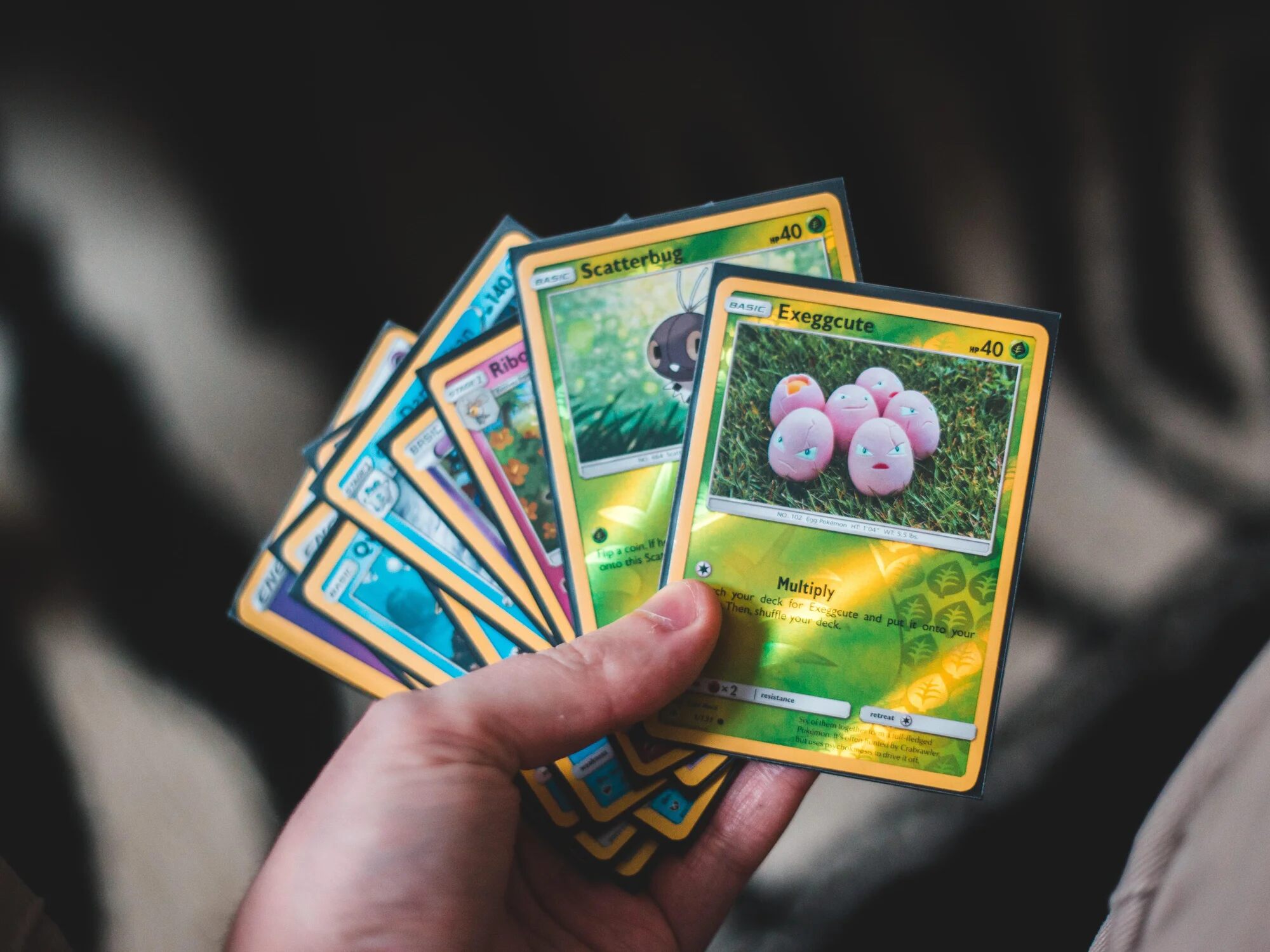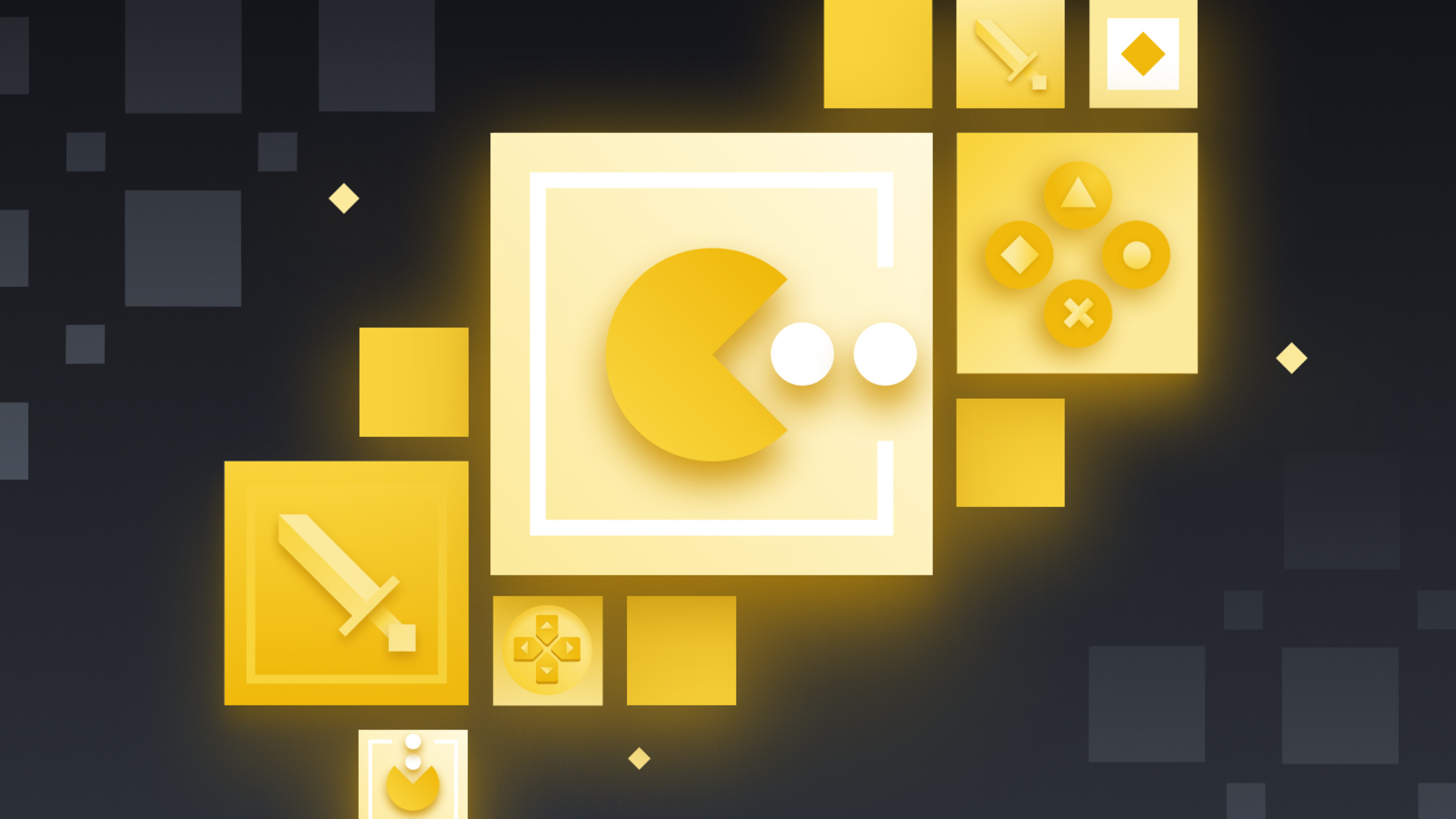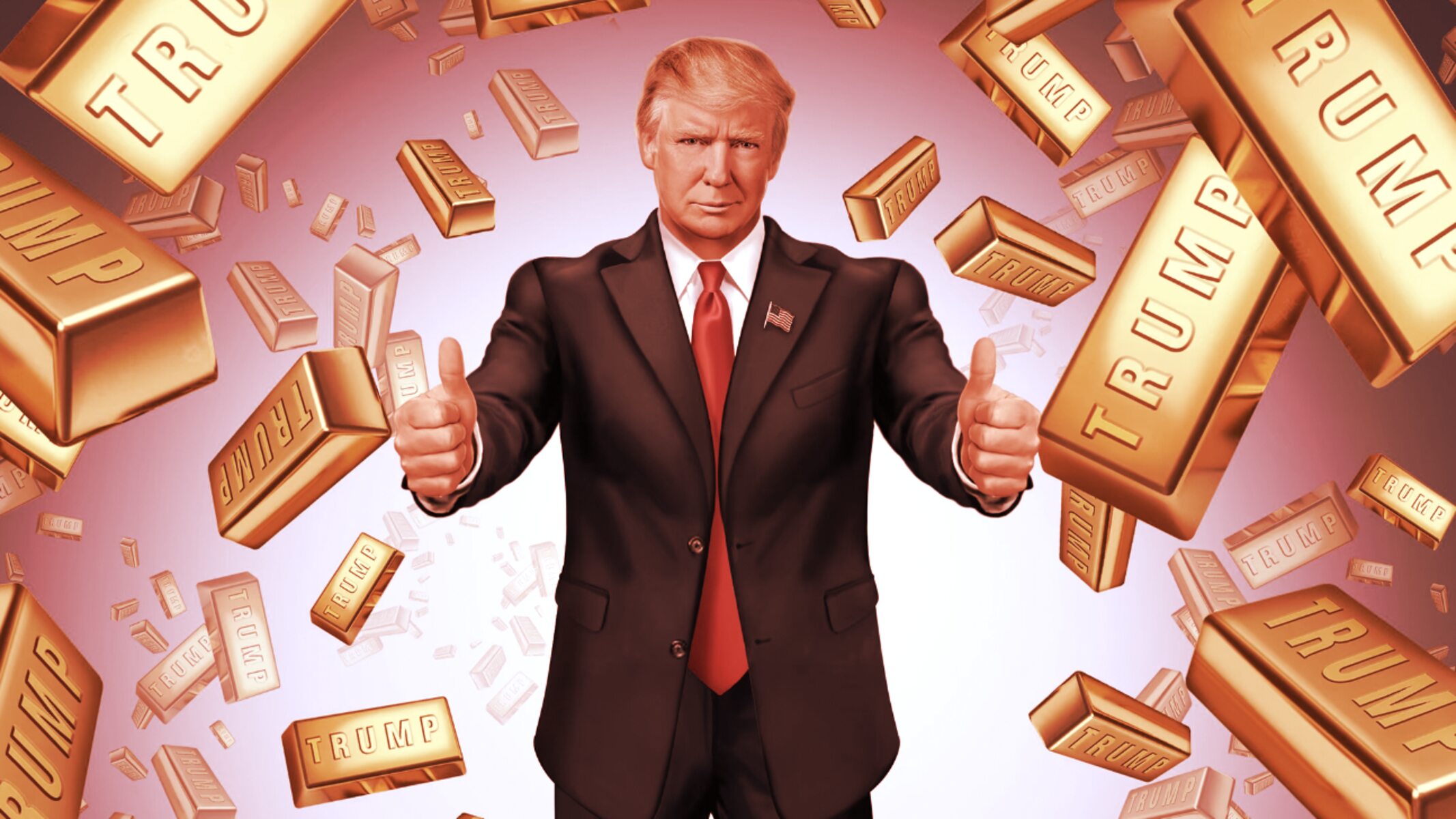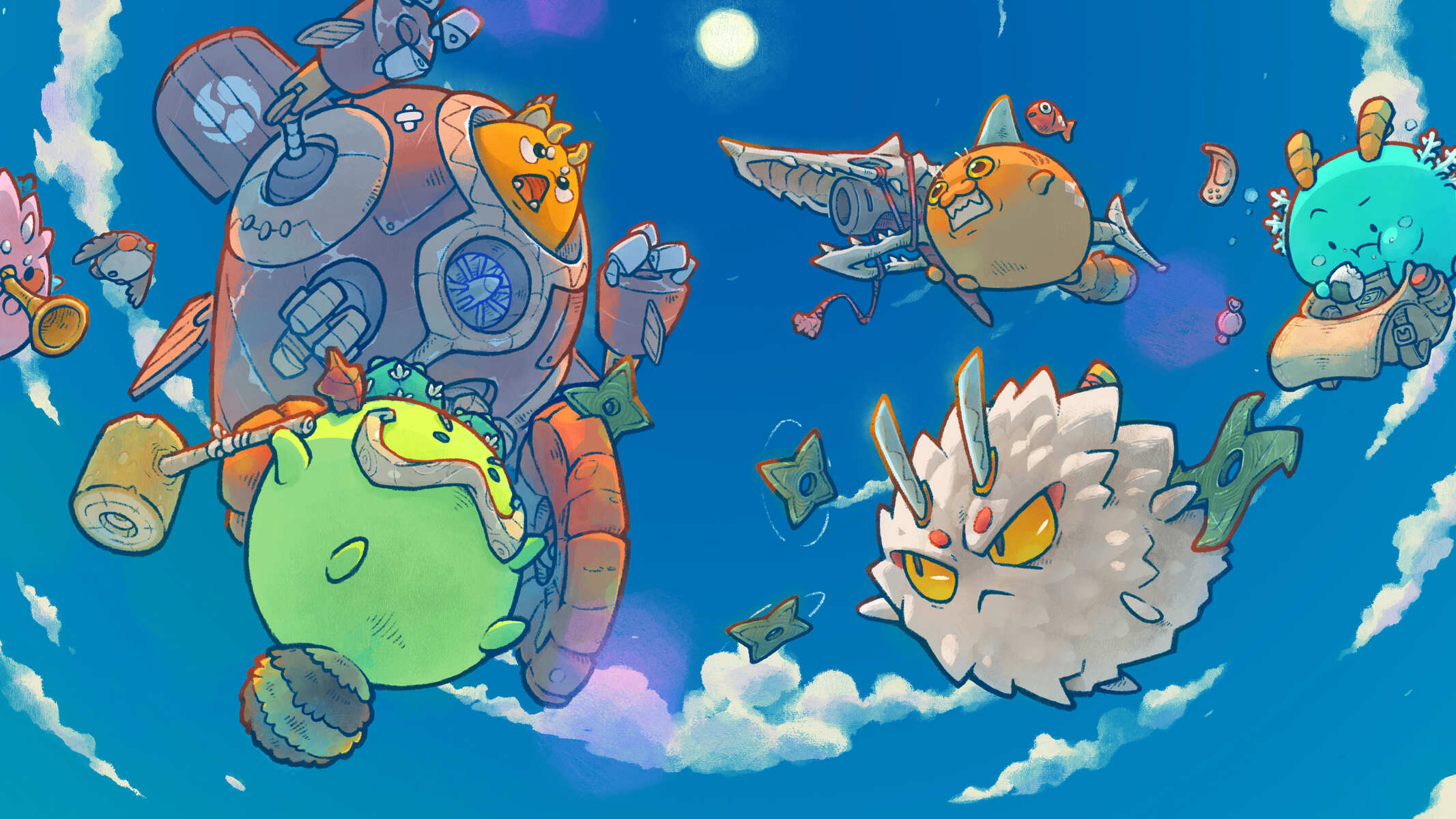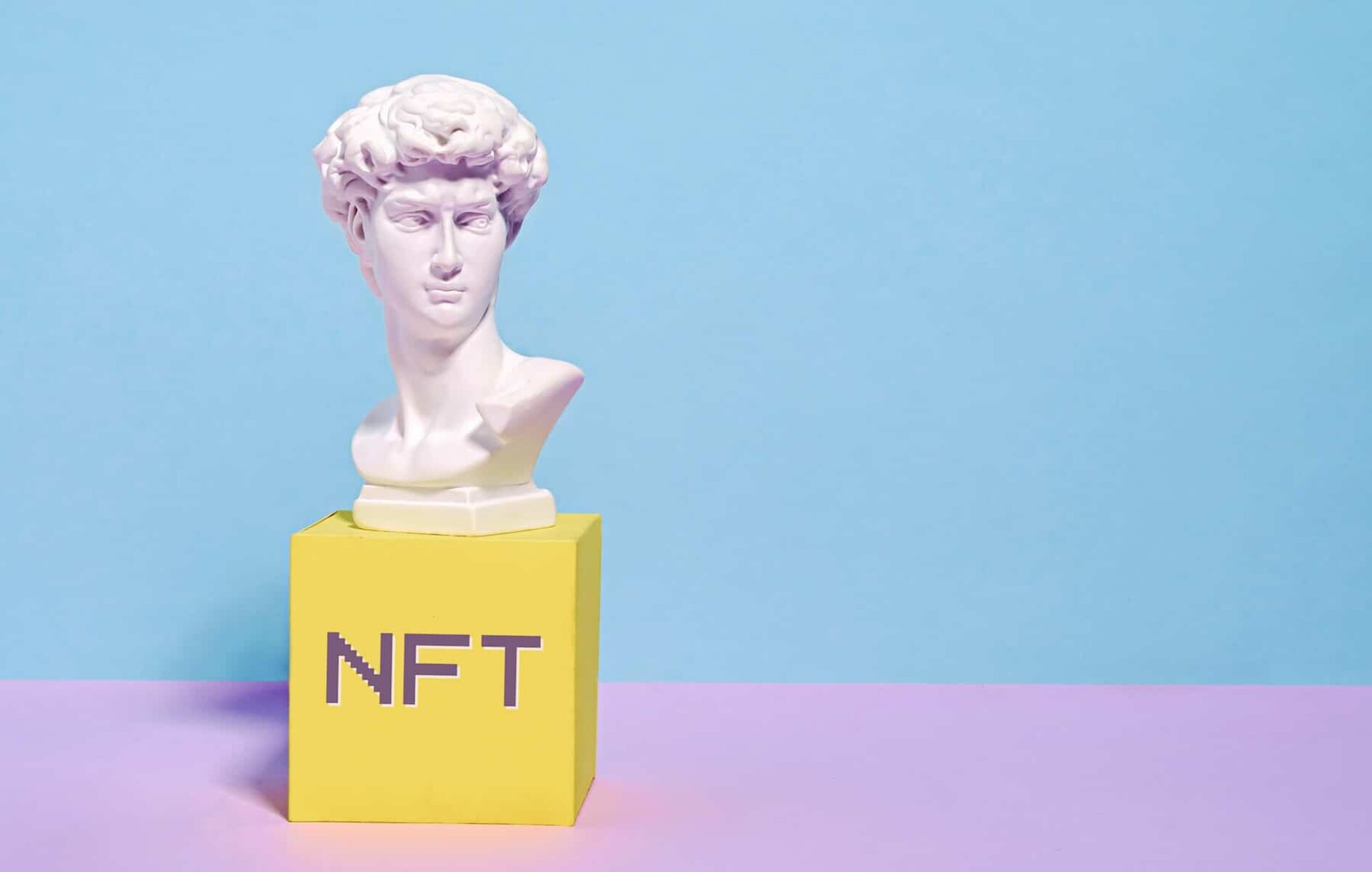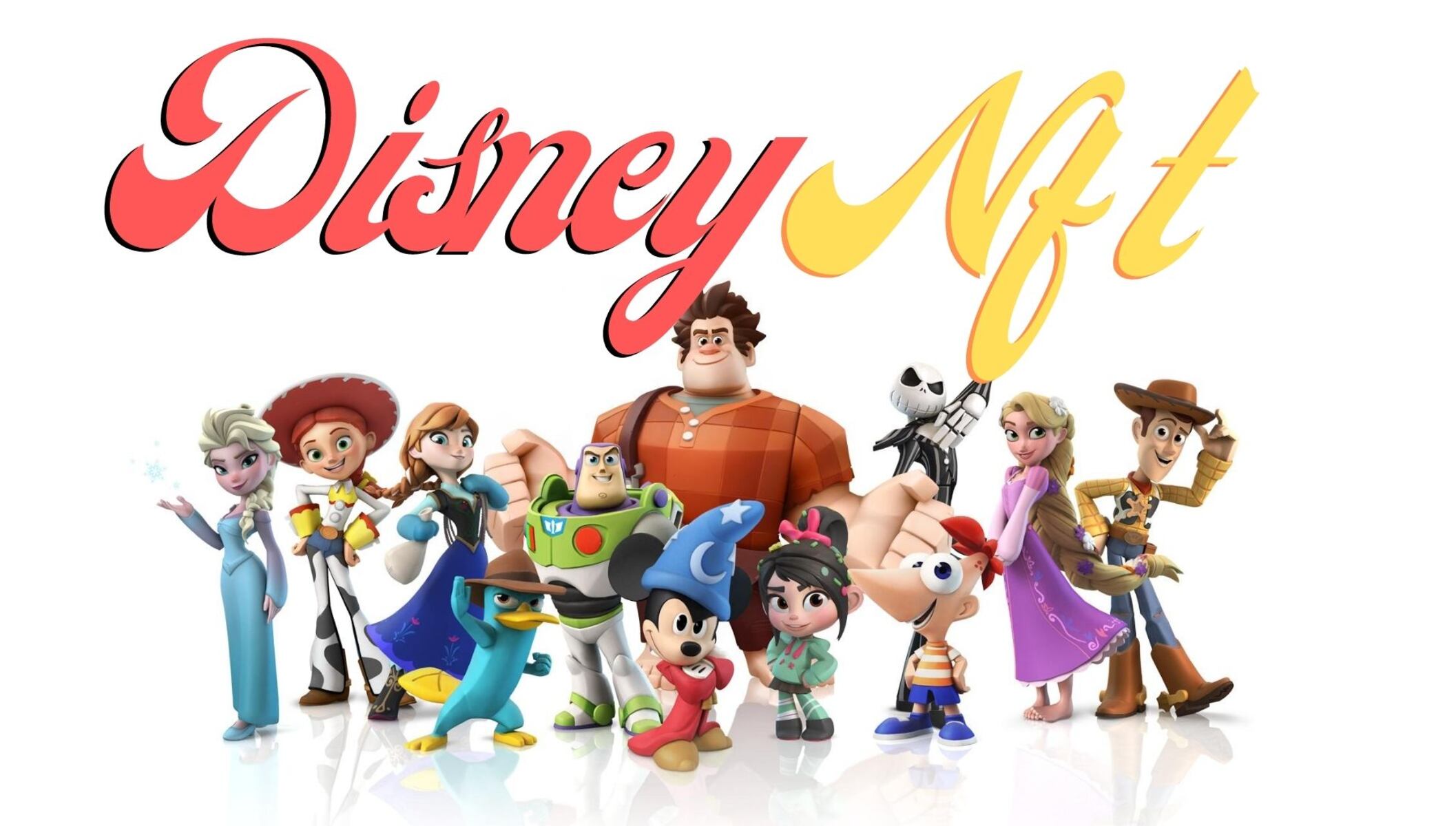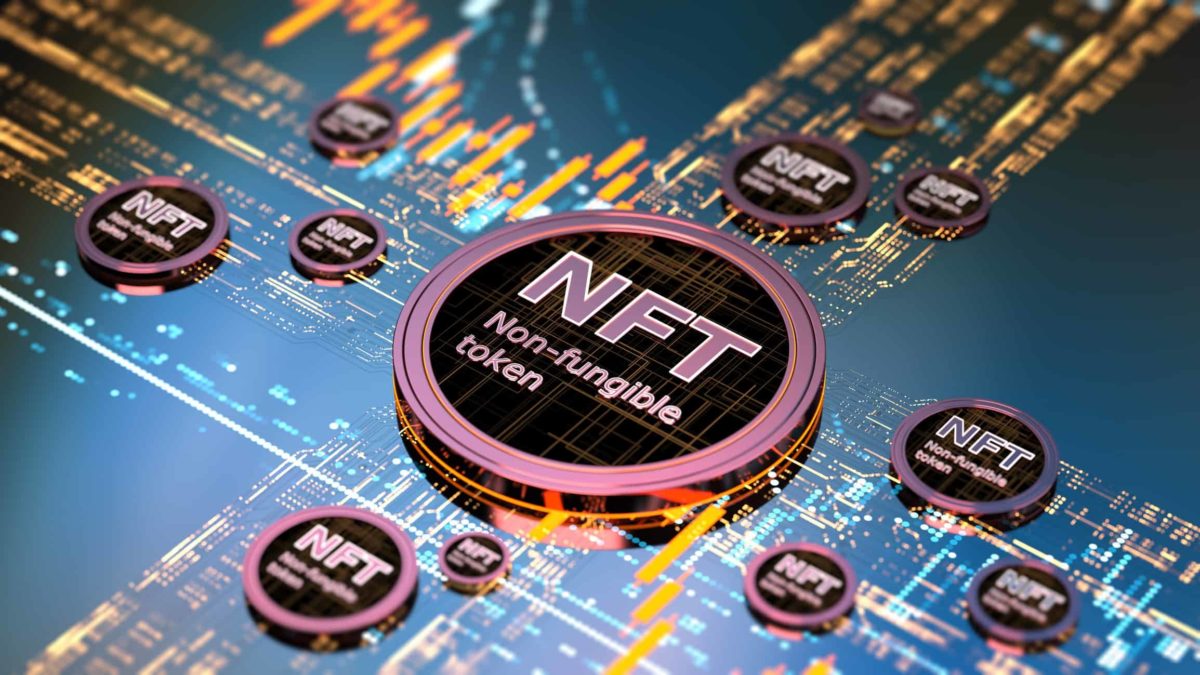Introduction
Welcome to the world of NFT trading cards, where digital art meets blockchain technology. With the rise in popularity of cryptocurrency and the blockchain revolution, NFTs (Non-Fungible Tokens) have emerged as a groundbreaking innovation. NFT trading cards have taken the collectibles market by storm, offering a unique and exciting way to own and trade digital assets.
Unlike traditional trading cards which were limited to physical form, NFT trading cards exist solely in the digital sphere. They are unique digital assets that can be bought, sold, and owned, thanks to the blockchain technology that underpins them. Each NFT trading card is one-of-a-kind, representing a specific piece of artwork or digital content.
The concept of NFTs hinges on the idea of provenance and ownership. The blockchain technology records every transaction and verifies the authenticity and ownership of each NFT trading card. This ensures that the owner has a legitimate and irrefutable claim to the digital asset, making it a valuable and sought-after collectible.
Over the past few years, NFT trading cards have gained significant attention and traction. Digital artists, creators, and collectors alike have recognized the potential of NFTs to revolutionize the world of art and collectibles. In fact, NFT sales have reached staggering figures, with multi-million-dollar transactions becoming commonplace.
In this article, we will delve into the fascinating world of NFT trading cards. We will explore what they are, how they are created, the different types available, and the potential challenges and risks involved. Whether you are an art enthusiast, a collector, or simply curious about this evolving digital landscape, join us as we unravel the mysteries and possibilities of NFT trading cards.
What Is a NFT Trading Card?
A NFT trading card is a unique digital asset that represents a piece of artwork or digital content. It is a digital version of the traditional trading cards that have been popular among collectors for decades. However, unlike physical trading cards, NFT trading cards exist solely in the digital realm and are authenticated and verified using blockchain technology.
The term NFT stands for Non-Fungible Token, which means that each NFT trading card is unique and cannot be replicated or replaced. This is in contrast to cryptocurrencies like Bitcoin or Ethereum, which are fungible and can be exchanged on a one-to-one basis.
NFT trading cards can take various forms, including illustrations, animations, videos, music, or even virtual reality experiences. These digital assets are encoded with a unique set of data that establishes their ownership, authenticity, and provenance.
One of the key features of NFT trading cards is their ability to be bought, sold, and traded on blockchain-based marketplaces. These marketplaces provide a platform for collectors and enthusiasts to discover, showcase, and acquire NFT trading cards. Ownership and transactions of NFT trading cards are recorded and publicly accessible on the blockchain, ensuring transparency and trust in the digital collectibles ecosystem.
One might wonder, why would anyone buy or collect a digital trading card when it can easily be replicated or viewed online for free? The answer lies in the concept of scarcity and exclusivity. Each NFT trading card is authentic and limited in quantity, making it a rare and valuable asset. The ownership of an NFT trading card signifies possession of a unique digital creation, often tied to the fame and reputation of the artist or content creator.
Furthermore, NFT trading cards allow for the monetization and support of digital artists and creators. By purchasing an NFT trading card, collectors can directly support the artists whose work they admire and enjoy. This new avenue of digital art ownership enables artists to earn revenue by selling their creations without relying solely on traditional art galleries or intermediaries.
In the next sections, we will explore the process of creating NFT trading cards, the technology behind them, the different types of NFT trading cards, and the intricacies of buying and selling these unique digital assets.
How Are NFT Trading Cards Created?
Creating NFT trading cards involves a process that combines digital artistry and blockchain technology. Here’s a step-by-step overview of how NFT trading cards are created:
1. Artwork Creation: The first step in creating an NFT trading card is to produce the digital artwork or content. Artists and creators use various tools and software to bring their vision to life. This can include traditional illustration techniques, digital drawing tablets, graphic design software, or even coding for interactive experiences.
2. Choosing the NFT Platform: Once the artwork is complete, the artist selects a cryptocurrency-based platform to mint the NFT. There are several popular platforms available, such as Ethereum-based marketplaces like OpenSea, Rarible, or Binance’s NFT marketplace.
3. Setting Up a Wallet: To interact with these platforms and mint NFTs, the artist needs to set up a digital wallet compatible with the chosen cryptocurrency. Wallets like MetaMask or Coinbase Wallet allow artists to hold and manage their NFTs securely.
4. Uploading the Artwork: Artists upload their digital artwork to the chosen NFT platform. This typically involves providing a high-quality image or file of the artwork, along with relevant metadata such as title, description, and any additional details the artist wishes to include.
5. Configuring NFT Specifications: Artists have the option to specify certain features or attributes associated with the NFT. This can include things like the edition number, rarity level, unlockable content, or even special perks for the owner of the NFT trading card.
6. Adding Smart Contracts: Smart contracts are small pieces of code that govern and execute the rules surrounding the NFT. Artists can customize the smart contract to define how royalties will be distributed to the artist for future sales of the NFT trading card.
7. Minting the NFT: Once all the necessary information and configurations are in place, the artist mints the NFT. Minting refers to the process of creating a new NFT on the blockchain, establishing its unique identity and ownership.
8. Verification and Listing: After minting the NFT, the artist’s creation goes through a verification process on the NFT marketplace. This ensures the authenticity and integrity of the artwork and metadata before it is listed for sale or exhibition.
9. Displaying and Selling: Upon successful verification, the NFT trading card is displayed on the marketplace for potential buyers to discover and purchase. Artists can set a fixed price or opt for an auction format, where the highest bidder acquires the NFT.
10. Ownership and Transfer: Once a buyer purchases the NFT trading card, ownership is transferred to their digital wallet. The blockchain records the transaction, providing a transparent and immutable ledger of ownership for the NFT.
It’s important to note that the process of creating NFT trading cards is flexible and can vary depending on the platform or marketplace chosen. Artists have the freedom to experiment with different approaches and tailor their NFTs to their artistic vision and the desires of their audience.
Now that we understand how NFT trading cards are created, let’s dive deeper into the underlying technology of blockchain and NFTs in the next section.
Understanding Blockchain and NFTs
Blockchain technology is the foundation on which NFT trading cards are built. To truly comprehend NFTs, it’s essential to grasp the fundamentals of blockchain. So, let’s explore the key concepts:
Decentralization: Unlike traditional centralized systems, blockchain operates on a decentralized network of computers, known as nodes. This distributed nature ensures that no single entity has complete control over the data stored on the blockchain.
Immutability: Information stored on the blockchain is immutable, meaning it cannot be modified or tampered with once it has been recorded. This attribute provides a high level of trust and transparency, making the blockchain ideal for verifying the authenticity and ownership of NFT trading cards.
Smart Contracts: Smart contracts are self-executing agreements coded onto the blockchain. They automatically execute predefined actions when specific conditions are met. Smart contracts enable artists to automate certain aspects of NFT trading cards, such as royalty distributions or unlockable content.
Tokenization: In blockchain terminology, tokens represent digital assets or rights. NFTs are a specific type of token that represent unique and irreplaceable assets, such as NFT trading cards. Each NFT trading card is associated with a distinct token, providing verifiable proof of ownership.
NFTs leverage the capabilities of blockchain technology to revolutionize the way we perceive and interact with digital assets. By creating a secure, transparent, and decentralized system for owning and trading digital collectibles, NFTs have opened up a new world of possibilities for artists, collectors, and enthusiasts.
Unlike traditional digital content, NFT trading cards have provable scarcity and provenance. Each NFT is assigned a unique identifier that differentiates it from all other tokens on the blockchain. This uniqueness ensures that NFT trading cards cannot be forged or duplicated, making them valuable and highly sought after by collectors.
Through the use of NFTs, artists and creators can establish a direct connection with their audience and maintain ownership and control over their work. The blockchain provides an immutable record of ownership, allowing creators to receive royalties from secondary sales of their NFT trading cards, even as they change hands in the marketplace.
The concept of NFTs has extended beyond just trading cards and has found applications in various industries. From digital art and collectibles to virtual real estate and even music albums, NFTs empower creators to monetize their work and grant ownership rights to their fans and supporters.
Now that we have a foundational understanding of blockchain and NFTs, let’s explore the different types of NFT trading cards in the next section.
Different Types of NFT Trading Cards
NFT trading cards come in various forms, offering a wide range of digital collectibles for enthusiasts to discover and own. Let’s explore some of the different types of NFT trading cards available:
1. Artistic and Illustrative NFTs: These NFT trading cards showcase digital art pieces created by talented artists. They can range from stunning illustrations to intricate animations or even immersive virtual reality experiences. Artists use their creativity and skills to produce visually captivating and unique NFT trading cards.
2. Gaming and Sports NFTs: NFT trading cards have also made their way into the gaming and sports industries. These cards can represent characters, items, or even virtual land within a game. In the sports realm, NFT trading cards can showcase memorable moments from different sports, allowing fans to collect and trade their favorite athletes or moments.
3. Music and Collectible NFTs: Music artists and bands are leveraging NFTs to offer their fans exclusive collectibles. These can include limited edition albums, concert tickets, backstage passes, or even one-of-a-kind music experiences. NFT trading cards in the music industry provide a unique connection between artists and their dedicated fan base.
4. Virtual Real Estate NFTs: Virtual worlds and metaverses have gained immense popularity, and NFT trading cards can represent virtual real estate within these digital realms. These NFTs offer individuals the opportunity to own and trade virtual land, allowing them to explore, build, and interact within these virtual environments.
5. Digital Fashion NFTs: With the rise of digital fashion, NFT trading cards have become a platform for showcasing and owning digital clothing and accessories. These NFTs allow users to dress up their digital avatars with unique and exclusive fashion items, making a statement in virtual spaces.
6. Collectible and Pop Culture NFTs: NFT trading cards have become a hub for collectors and enthusiasts of various pop culture icons and characters. From iconic movie scenes and memorabilia to digital representations of beloved characters, these NFTs capture the essence of popular culture and provide a space for fans to engage with their favorite franchises.
These are just a few examples of the diverse range of NFT trading cards available in the market. The beauty of NFTs lies in their ability to accommodate various forms of digital content and transform them into unique assets that can be collected, traded, and cherished by individuals worldwide.
Now that we have explored the different types of NFT trading cards, let’s move on to the next section, where we will dive into the art of collecting NFT trading cards.
Collecting NFT Trading Cards
Collecting NFT trading cards has become a popular hobby and investment opportunity for digital art enthusiasts. With the rise of blockchain technology and the accessibility of NFT marketplaces, anyone can start building their own digital collection. Let’s explore the art of collecting NFT trading cards:
1. Discovering Unique NFTs: The first step in collecting NFT trading cards is to explore different marketplaces and platforms to discover unique and interesting NFTs. Many marketplaces offer browsing and search features to help collectors find specific artists, themes, or genres that resonate with their interests.
2. Researching Artists: Before adding an NFT trading card to your collection, it’s important to research the artist behind the artwork. Learn about their style, background, and reputation in the digital art community. This ensures that you are investing in an NFT from a respected and established artist.
3. Assessing Rarity and Scarcity: Rarity is a key factor in the value of NFT trading cards. Assessing the rarity and scarcity of an NFT can help collectors determine its potential long-term value. Limited edition or one-of-a-kind NFTs are often highly sought after by collectors.
4. Valuing Emotional Connection: While the potential financial value of NFT trading cards is an important aspect, don’t forget to value the emotional connection you have with the artwork. Collecting NFTs should be a personal experience that brings joy and inspiration to your life.
5. Building a Diverse Collection: To create a well-rounded collection, consider diversifying your NFT trading cards. Explore different art styles, genres, and mediums to ensure a varied and eclectic collection that reflects your unique taste and interests.
6. Engaging with the Community: Engaging with the NFT community can enhance your collecting journey. Participate in discussions, attend virtual art events, and connect with fellow collectors and artists. This can provide insights, networking opportunities, and a deeper appreciation for the art of NFT trading cards.
7. Storing and Displaying NFTs: As digital assets, NFT trading cards require secure storage in digital wallets compatible with the blockchain on which they are minted. Some enthusiasts also opt for virtual galleries or platforms that allow them to showcase their collection in a visually appealing and interactive manner.
8. Tracking and Managing: As your collection grows, it’s important to keep track of the NFTs you own. Tools and platforms are available to help collectors manage and organize their NFT trading cards, ensuring easy access and monitoring of their investments.
Remember, collecting NFT trading cards should be a deliberate and enjoyable experience. Set a budget, do your research, and always approach the hobby with a discerning eye. Building a collection over time allows you to curate a portfolio of digital art that you can take pride in.
Now that we have explored the art of collecting NFT trading cards, let’s move on to the next section where we will delve into the buying and selling of these unique digital assets.
Buying and Selling NFT Trading Cards
The buying and selling of NFT trading cards is an exciting and dynamic process that takes place on various blockchain-based marketplaces. Here’s what you need to know about buying and selling NFT trading cards:
Buying NFT Trading Cards:
– Explore NFT Marketplaces: Browse popular NFT marketplaces such as OpenSea, Rarible, or SuperRare to discover a wide range of NFT trading cards for sale. These marketplaces provide a platform for artists and collectors to connect and transact.
– Setting a Budget: Determine your budget for purchasing NFT trading cards. Prices can vary significantly based on factors such as the popularity of the artist, rarity of the NFT, and demand within the market. It’s important to stick to your budget and carefully consider the value and potential appreciation of the NFT.
– Research the NFT: Prior to making a purchase, conduct thorough research on the NFT you’re interested in. Look into the artist’s reputation and past sales, examine the rarity and scarcity of the NFT, and consider the emotional and aesthetic appeal it holds for you.
– Verify Authenticity: Due to the open nature of blockchain, it’s important to verify the authenticity of the NFT trading card you intend to purchase. Ensure that the NFT is minted by the actual artist and that its ownership and transaction history on the blockchain are verifiable.
– Making the Purchase: When ready to make a purchase, follow the instructions provided by the respective NFT marketplace. Transactions usually require the use of cryptocurrency, so having a digital wallet with sufficient funds is necessary. Once the transaction is complete, the ownership of the NFT trading card will be transferred to your wallet.
Selling NFT Trading Cards:
– Evaluate Market Demand: Before selling an NFT trading card, assess the current market demand for similar cards. Consider factors such as recent sale prices, trends in the art world, or the popularity of the artist. This will help you determine the optimal time and price to list your NFT for sale.
– Choose the Right Marketplace: Select a reputable NFT marketplace on which to sell your trading card. Consider factors such as fees, user interface, and the target audience of the marketplace. Some marketplaces also offer premium features to highlight your NFT, increasing its visibility to potential buyers.
– Set a Competitive Price: Price your NFT trading card appropriately to attract potential buyers. Research recent sales of similar NFTs to get an idea of the current market value. Setting a competitive price will increase the likelihood of a successful sale.
– Provide Detailed Information: When listing your NFT for sale, provide detailed and accurate information about the artwork, including the artist’s background, the concept behind the piece, and any notable details about the NFT trading card. Transparency and comprehensive information can help generate interest from potential buyers.
– Promote Your Listing: Take an active role in promoting your NFT trading card. Share the listing on social media platforms, engage with art communities, and reach out to potential buyers who may be interested in your artwork. Building a network and engaging with the community can increase the visibility of your NFT and attract potential buyers.
– Completing the Sale: Once a buyer is interested in purchasing your NFT trading card, follow the instructions provided by the marketplace for finalizing the transaction. Ensure that the transfer of ownership takes place securely and that the buyer’s payment is received before transferring the NFT to their wallet.
Buying and selling NFT trading cards requires market awareness, research, and an understanding of the value and appeal of the artwork. By participating in the vibrant marketplace ecosystem, collectors and artists can engage in a dynamic and rewarding experience.
Let’s move on to the next section, where we will explore the value and potential of NFT trading cards.
The Value of NFT Trading Cards
NFT trading cards have gained significant attention in the art and collectibles world, with remarkable sales figures and growing interest from collectors and investors. Let’s explore the value of NFT trading cards:
Uniqueness and Scarcity: NFT trading cards derive their value from their unique nature and scarcity. Each NFT represents a distinct digital asset that cannot be replicated or duplicated. The limited supply of NFT trading cards contributes to their desirability and drives up their value in the market.
Artist Recognition: The reputation and recognition of the artist associated with an NFT trading card significantly impacts its value. Established and widely respected artists often command higher prices for their NFTs, as collectors are drawn to the prestige and artistic vision they bring.
Cultural and Historical Significance: Some NFT trading cards hold cultural or historical significance, capturing important moments, movements, or iconic figures. These digital assets can become valuable due to their association with significant events or captivating narratives that resonate with collectors.
Rarity and Collectibility: Collectors are often drawn to rare and collectible items, and NFT trading cards offer precisely that. Limited-edition releases, special collaborations, or unique features can increase the value and demand for NFT trading cards, making them highly sought after by collectors looking to enhance their collections.
Secondary Market Demand: The vibrant secondary market for NFT trading cards can greatly impact their value. If an artist gains popularity or achieves significant milestones, the demand for their NFTs may soar, leading to increased prices in the resale market. Similarly, if an NFT trading card is associated with a culturally significant event, it may see a surge in demand and subsequent value appreciation.
Ownership and Royalties: NFTs provide artists with the opportunity to earn ongoing royalties from their work. With every subsequent sale of an NFT trading card, the original artist can receive a predetermined percentage of the transaction value. The potential for artists to benefit financially from the resale of their NFTs adds another layer of value to these digital assets.
Intersection of Technology and Art: NFT trading cards represent the intersection of cutting-edge technology and artistic expression. This imbues them with a certain novelty and allure that appeals to collectors who appreciate the fusion of art and innovation. The ability to digitally own and trade unique assets on the blockchain makes NFT trading cards highly attractive to those looking to embrace the digital age.
It’s important to note that the value of NFT trading cards is subject to market dynamics and trends, and can be influenced by various factors such as the broader cryptocurrency market, technological advancements, or shifts in collector preferences. As with any form of investment or collectible, there are risks associated with fluctuations in value.
Now that we have explored the value of NFT trading cards, let’s move on to the next section where we will discuss the challenges and risks associated with engaging in the NFT market.
Challenges and Risks of NFT Trading Cards
Engaging in the NFT market and collecting NFT trading cards comes with its own set of challenges and risks. It’s important to be aware of these factors before venturing into the world of NFTs. Let’s explore some of the challenges and risks associated with NFT trading cards:
Market Volatility: The NFT market can be highly volatile, with prices fluctuating rapidly. The value of NFT trading cards can soar or plummet based on investor sentiment, artist popularity, and market trends. It’s crucial to approach the market with caution and conduct thorough research before making any significant investments.
Authentication and Copyright Concerns: Due to the open nature of blockchain technology, it’s essential to ensure the authenticity and legitimacy of the NFT trading cards you acquire. There have been instances of unauthorized reproductions or copyright infringements, which can diminish the value and legality of the NFT. Verifying the originality and ownership of the NFT becomes crucial in mitigating such risks.
Environmental Impact: The energy consumption associated with blockchain technology, particularly in proof-of-work blockchains like Ethereum, has raised concerns about the environmental impact of NFTs. Artists and collectors are increasingly considering the carbon footprint associated with their activities in the NFT space, and efforts are being made to explore more sustainable alternatives.
Lack of Regulatory Frameworks: The emerging nature of the NFT market presents challenges in terms of regulation and legal frameworks. There is currently a lack of standardized regulations governing the NFT space, which can create uncertainties around issues such as ownership rights, intellectual property, and dispute resolution. It’s crucial to understand the legal landscape and seek legal advice where necessary.
Market Saturation and Quality Control: The growing popularity of NFTs has led to a flood of new artists and creators entering the market. While this presents opportunities for discovery, it also poses challenges in terms of market saturation and quality control. With an influx of NFT trading cards, it becomes important for collectors to distinguish between authentic and high-quality artwork and less desirable offerings.
Technological Risks: As with any technology-driven field, there are inherent risks associated with the use of blockchain technology. These risks include potential hacks or security breaches, vulnerabilities in smart contracts, or system glitches. It’s important to take necessary precautions, such as using secure wallets and staying informed about security best practices.
Understanding and being mindful of these challenges and risks can help collectors and investors make informed decisions in the NFT market. Research, due diligence, and a cautious approach are essential when navigating the ever-evolving landscape of NFT trading cards.
Now that we have explored the challenges and risks, let’s move on to the final section where we will discuss the future prospects and potential developments in the world of NFT trading cards.
Future of NFT Trading Cards
The future of NFT trading cards holds immense potential for growth and innovation. As the technology and market continue to evolve, several trends and developments are shaping the future of NFTs. Let’s explore some of the possibilities:
Broader Adoption and Integration: As NFT trading cards gain wider recognition and acceptance, we can expect to see increased adoption and integration across different industries. The use of NFTs may extend beyond the art and gaming sectors, infiltrating fields such as music, fashion, sports, and even virtual reality experiences.
Improved Scalability and Environmental Considerations: Efforts are underway to address the environmental concerns associated with certain blockchain technologies. As the industry seeks to reduce carbon footprints and improve scalability, we may witness the development and adoption of more eco-friendly alternatives, such as blockchain solutions based on proof-of-stake mechanisms.
Enhanced Interactivity and Utility: NFTs have the potential to become more interactive and functional. This could include features like personalized experiences, augmented reality integrations, or access to exclusive events or content. These added layers of interactivity and utility can increase the value and appeal of NFT trading cards.
Increased Regulation and Standardization: With the growing popularity of NFTs, efforts to establish regulatory frameworks and industry standards are likely to intensify. This will provide clarity and protection for both artists and collectors, ensuring fair practices, copyright protection, and dispute resolution mechanisms in the NFT space.
Collaborations and Crossovers: The world of NFT trading cards offers endless opportunities for collaborations between artists, creators, celebrities, and even brands. Collaborative endeavors could lead to special edition releases, crossover events, and unique NFT trading card collections that captivate a broader audience and ignite new trends.
Increased Focus on Digital Ownership and Authenticity: NFTs serve as a tool for establishing true digital ownership and proving the authenticity of digital assets. As society becomes more digitized, NFT trading cards can play a crucial role in asserting ownership rights and verifying the provenance of digital content.
The Evolution of Marketplaces and Infrastructure: NFT marketplaces are continuously improving and evolving to meet the growing demands of artists and collectors. We can anticipate more user-friendly interfaces, enhanced discoverability features, and improved transaction processes. Moreover, decentralized marketplaces and cross-chain compatibility may emerge, providing greater flexibility and options for trading NFT trading cards.
The future of NFT trading cards holds promise for continued innovation, mainstream adoption, and expanded opportunities for artists and collectors. As the technology matures, the boundaries of what is possible with NFTs will continue to be pushed, resulting in new and exciting experiences in the digital art and collectibles landscape.
With ongoing developments and the ever-evolving nature of the NFT market, it’s an exciting time to be a part of the NFT trading card ecosystem. Keeping an eye on emerging trends and staying informed about industry advancements will help enthusiasts navigate the future of NFT trading cards.
Now that we have explored the future prospects, let’s conclude our journey through the world of NFT trading cards.
Conclusion
The emergence of NFT trading cards has revolutionized the world of digital art and collectibles, providing a unique and innovative way to own and trade digital assets. NFTs, powered by blockchain technology, have introduced a new paradigm of digital ownership, verifiable scarcity, and direct artist support.
Throughout this article, we’ve explored the intricacies of NFT trading cards, from understanding their definition and creation process to delving into the underlying blockchain technology. We’ve examined the different types of NFT trading cards available, the art of collecting and the dynamics of buying and selling in the NFT market.
We have also discussed the value these digital collectibles hold, as well as the challenges and risks that come with engaging in the NFT market. The future prospects of NFT trading cards look promising, with trends pointing towards broader adoption, enhanced functionality, and increased regulatory frameworks.
NFT trading cards have created a new landscape for artists, collectors, and enthusiasts to connect and interact in the digital realm. They offer a bridge between technology and art, embracing digital ownership in unprecedented ways. However, it’s important for participants to navigate the market with caution, conducting research and staying informed about the intricacies and risks associated with NFT trading cards.
As technology advances and the NFT space continues to evolve, we are witnessing a transformative shift in the art and collectibles industry. NFT trading cards have opened up new opportunities for artists to showcase their work, collectors to curate unique collections, and enthusiasts to engage with digital assets in a whole new way.
Whether you’re an artist looking to monetize your creations, a collector building a digital portfolio, or simply curious about the intersection of art and technology, the world of NFT trading cards offers endless possibilities.
So, immerse yourself in this exciting realm, explore, and let your imagination run wild. Take part in shaping the future of NFTs and the digital art landscape. The journey awaits you in the world of NFT trading cards.







